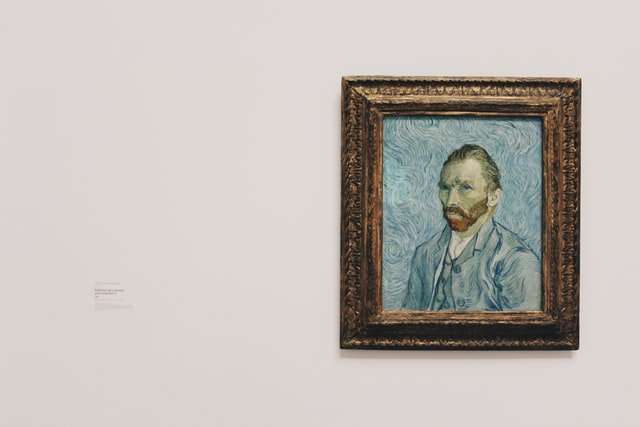If you are looking for a new color to paint your walls, the first step is deciding what kind of space you’re decorating.
The color of a room says as much about its style and personality as it does about the objects inside. While interior designers have long understood the impact that paint can have on a room, most people don’t know where to start when choosing a color.
The key to picking a good paint color is understanding how different hues affect the senses and what emotions they evoke. Here’s a primer on how different colors affect our moods and how you can use them in your home.
Red: Red is a bold, warm color that stimulates the appetite, increases heart rate and raises blood pressure. This color can make us feel confident, powerful and sexy. Red creates an energetic atmosphere and is often used in dining rooms or kitchens to encourage conversation and activity. Consider using red in small doses or as an accent if you don’t want your home to feel too energetic.
Yellow: Yellow stimulates mental activity and creativity, making it an excellent choice for work spaces with desks or tables. The sunny yellow hue instantly brightens up any room while making it appear larger than it really is. Consider using yellow in bedrooms or kitchens to help stimulate positive thoughts
Whites and Neutrals:
The most popular paint colors are whites, greys, and beiges. They go with anything and can usually be found in most hardware stores or home improvement stores such as Lowes, Home Depot, or Lowe’s. These are the safest bets because they won’t clash with other things in your home or room. They also work nicely with darker paint colors.
Teal:
A turquoise-ish green that leans more toward blue than green. Nowadays teal has become a very popular color for bathrooms and bedrooms. It’s a great color to brighten up a room and add some life to it. Teal makes a room feel more modern, clean, and relaxing.
Teal is calming because of its association with the ocean. You can try pairing it with blues, grays, white walls, black walls, browns and many other colors. It really depends on the person’s taste and what look they’re going for in their home. The only con about this color is it can sometimes make you feel seasick if it’s used too much in homes.
Skies:
Blue is a very popular color for bedrooms because of its calming effect on people who suffer from insomnia or anxiety. The
The first question to ask yourself when choosing paint colors for your home is: What is the dominant color in the room?
If you were to look at the room with a fresh eye, you would not necessarily notice this color. It may be very subtle or it may be glaringly obvious, but it will be there. If you have blue walls, for example, then your dominant color is blue.
So if your walls are green, you will want to choose a secondary color that contrasts with the green but complements the primary color of the room.
If you have yellow walls, then you will want a secondary color that contrasts with the yellow but complements the primary color of the room.
If your walls are purple, then you will want a secondary color that contrasts with purple but complements the primary color of the room.
It’s a little more complicated than this because there are also tertiary colors to consider, but once you know your primary and secondary colors, here is how to use them to pick your tertiary colors:
1. Choose a tertiary color that contrasts with both your primary and secondary colors.
2. Choose another tertiary color that complements one of your primary or secondary colors**.**
If you’re looking to paint the interior of your home, you’ll likely be dealing with repainting it at least once a decade. It’s a lot of work, but it can help set the mood for your home and have a huge impact on how you feel when you’re there. Here are four tips to help you choose the right colors for your next paint job.
How many colors are enough? Most people will do best with about three colors in their rooms. Too few and you’ll be limited on options, but too many and you’ll have trouble coordinating them all well. An optimal number is somewhere between three and five colors.
For each color, make sure to consider its tints and shades as well as its primary color. A light blue can go from a pale aqua to a deep navy, while a dark blue may be almost black. You won’t want to use the same shade or tint for two different areas of your home; for example, if you have your living room painted light blue, don’t use dark blue in another part of the house.
When deciding on color schemes, keep an eye out for trends in color over time. One of the most popular colors today is Pantone’s 2014 Color of the Year: Radiant Or
I’ve been painting rooms in my house. I’m going to show you the color wheel I created and how I used it to select paint colors.
I got all of my paint cans, a color wheel, and a sample sheet of wall paper from an hardware store.
The main trick is to find out what kind of paint you are putting on your walls. Once you know that, you can figure out which color wheel to use. There are three basic types of paint: Interior latex, Exterior latex, and Oil based paints. Each type has it’s own color wheel.
This is the interior latex color wheel. It shows you what colors look good with white walls, which is the most common color people paint their walls.
For example; purple walls are bad because they don’t look good with white walls and they’re too dark for almost all rooms (unless you have black furniture). You should avoid using purple unless you really know what you’re doing and have a specific reason for using it besides “because I think it would look nice”.
Red on the other hand looks good with white walls because red is an accent color that stands out more than most other colors and complements white well when used as an accent color (as long as you don’t
Paint colors are important because they determine how your home feels to you and your guests. It can also determine how much you like your home.
Different paint colors have different effects on people. Some colors make people feel happy, some sad, some energetic, and others tired. Color theory can help you choose a color for your home that will give you the feeling you want to have every time you come home from work or wake up in the morning.
Color theory is a complex subject with many variables, so this article is only a brief introduction to the subject. If you’d like more information about how color affects moods and other factors, check out several of the books listed at the bottom of this article.
This post is all about the psychology behind different colors and how they can put you in a good or bad mood, depending on the situation.
The colors around you can have a huge effect on your emotions, whether you realize it or not. For example, different colors can affect your energy level and hunger level. This post will teach you how to use color psychology to choose paint colors that will make your home inviting, relaxing and exciting!
Let’s start with the basics, what exactly is color psychology? Color psychology is a science that uses color to evoke certain emotions, feelings or responses from people. Colors are considered to be one of the most important factors when determining how a person feels when they walk into a room. The color of a room could make them feel particularly happy or calm depending on what colors are used in the painting of the room.
Look at this diagram below and see what image each color evokes in your mind:
What do these images mean?
Blue : Inspiring Creativity/ Freedom
Green : Calm/ Fresh
Orange : Stimulating/ Motivating
Red : Passionate / Aggressive
Yellow : Che


